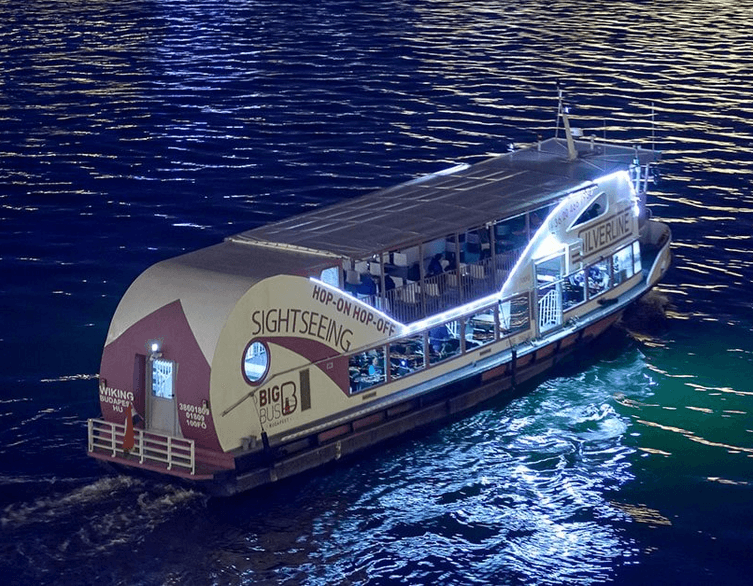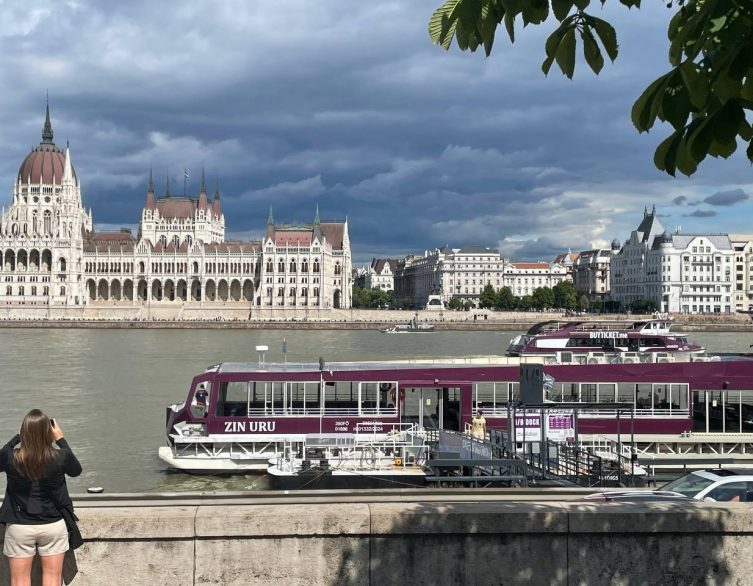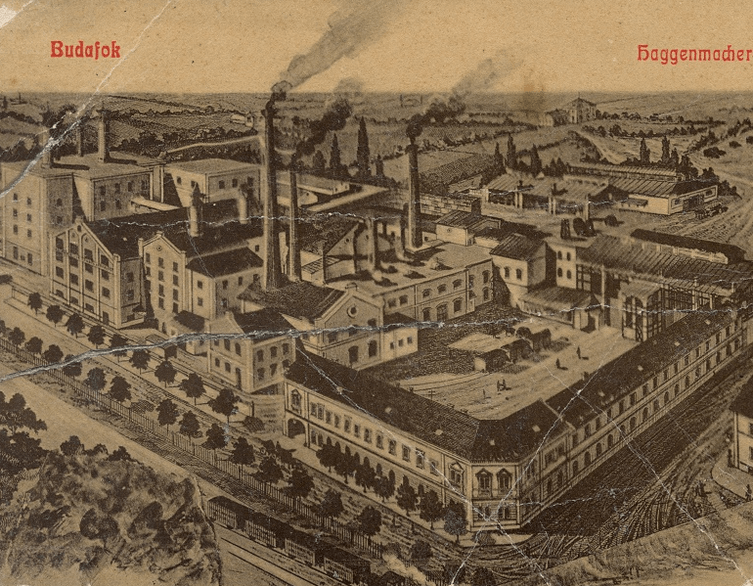The Hidden Cathedral Beneath Budapest: Discover the Remarkable Kőbánya Water Reservoir
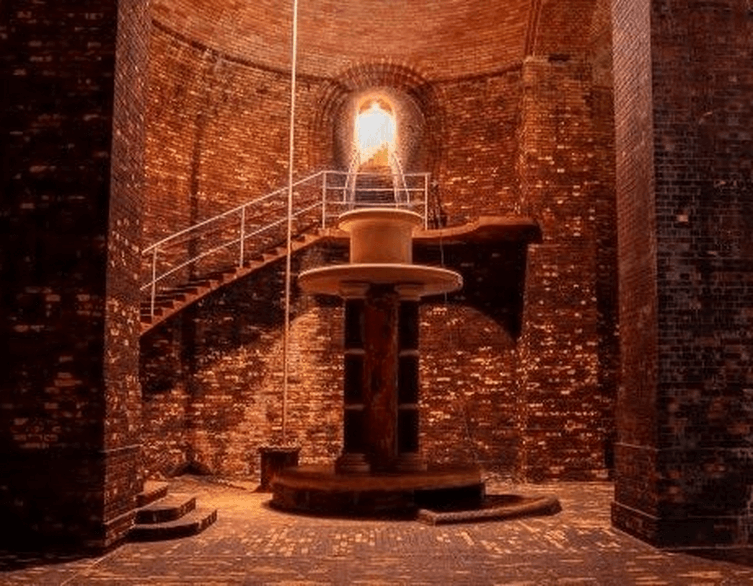
If you thought you’d seen all of Budapest’s architectural marvels, think again. Deep beneath the bustling streets of the 10th district lies one of the city’s best-kept secrets – a breathtaking underground cathedral that’s actually a 150-year-old water reservoir. Welcome to the Kőbánya Water Reservoir, a stunning piece of industrial heritage that opens its doors to the public just once a year, creating one of Budapest’s most sought-after tourist experiences.
The 2025 Open Days: A Tale of Incredible Demand
The September 19-21, 2025 dates when this extraordinary underground world becomes accessible to visitors during the European Heritage Days (Kulturális Örökség Napjai) have already become the stuff of legend. When registration opened on September 3rd at 2:15 PM, the incredible happened: all weekend slots were completely sold out within just 9 minutes, while Friday’s school group slots lasted only an hour before disappearing entirely.
This phenomenal demand – with disappointed visitors flooding social media with their frustration at missing out – speaks volumes about the unique appeal of this hidden architectural gem. Since securing a spot to visit this marvel has proven nearly impossible, we’re delighted to take you on a detailed virtual journey through this underground cathedral, sharing the secrets and stories that only a fortunate few thousand people get to experience firsthand each year.
The Story Behind the Underground Cathedral
A Victorian Engineering Marvel
Step back to 1866, when cholera ravaged Budapest’s Pest side. While Buda enjoyed clean water from medieval sources in the Sváb Hills, Pest faced a deadly water crisis. The city desperately needed a solution, and fast. Enter William Lindley, a brilliant English engineer from London, who designed what would become one of Europe’s most remarkable water infrastructure projects.
Working at breakneck speed, Lindley created the first Pest Waterworks at what is now Kossuth Square. But the system needed pressure-equalizing reservoirs, and Lindley chose the elevated Kőbánya Ó-hegy (Old Hill) as the perfect location. Between 1868 and 1871, Italian master masons and Hungarian workers carved out this underground marvel that continues to serve Budapest’s water needs today.
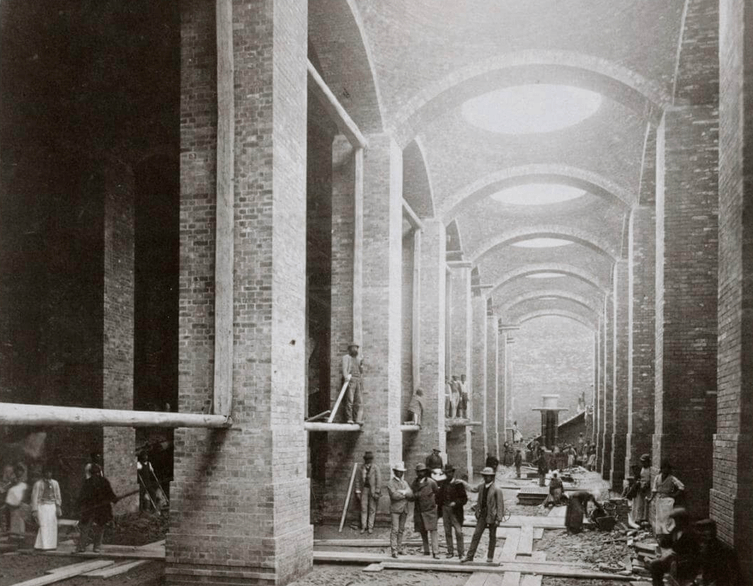
Image source: Budapest Water Works
Architectural Wonder: Why It’s Called an Underground Cathedral
The Spectacular Interior
When the lucky few descend the elegant spiral staircase from the charming little brick guardhouse at street level, they understand immediately why visitors gasp in amazement. The reservoir consists of two identical chambers, each capable of holding 10,800 cubic meters of water – that’s nearly 3 million gallons per chamber!
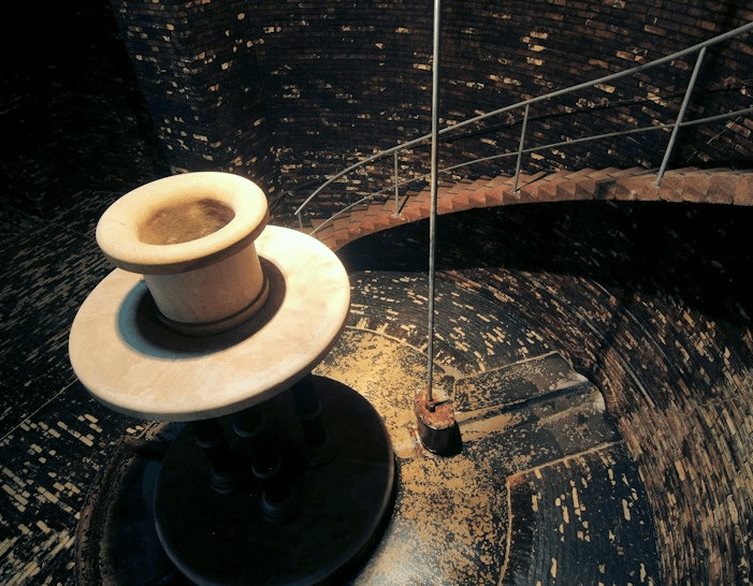
Image source: Budapest Water Works
The dimensions are truly cathedral-like:
- Length: 66 meters (216 feet)
- Width: 24 meters (79 feet)
- Height: 10.8 meters (35 feet)
- Wall thickness: 0.5 meters (20 inches)
Masterful Construction Details
The builders used 38 elegant columns to support the magnificent brick-vaulted ceiling, creating a three-nave structure that genuinely resembles a Gothic cathedral. The bricks came from the Tata Manor Brick Factory, and some still bear the factory’s original stamp after more than 150 years. These specially fired, less porous bricks were bonded with a mixture of hydraulic lime and cement that has withstood constant moisture for over a century and a half.
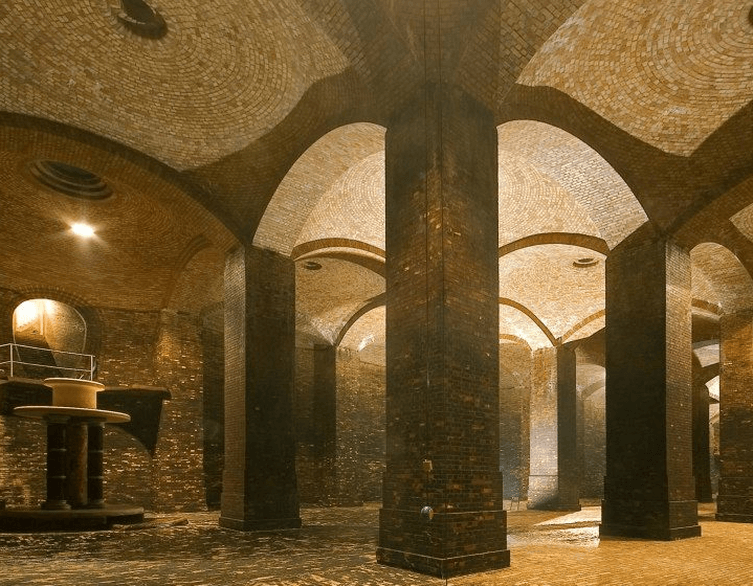
Image source: Budapest Water Works
The half-meter thick walls are surrounded by several meters of clay, creating a waterproof barrier that remains flawless to this day. The different water levels over the years have created beautiful color variations on the brick walls, resembling natural mosaics that enhance the chamber’s aesthetic appeal.
Best deals of Budapest
Engineering Excellence Through the Decades
Forward-Thinking Design Philosophy
The visionary approach of the original engineers becomes even more remarkable when you consider the numbers. When construction began in 1869, Budapest’s daily water demand was merely 1,850 cubic meters per day. Yet the engineers designed the pump house to handle 9,100 cubic meters daily – more than five times the current need!
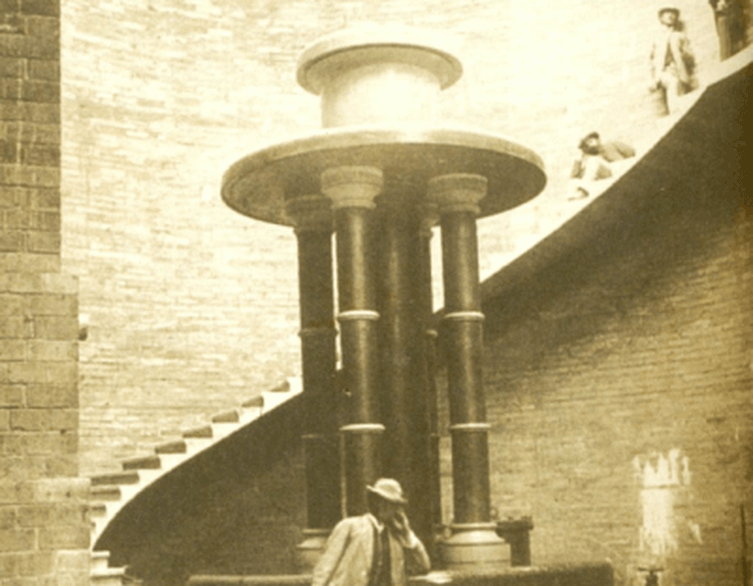
Image source: Budapest Water Works
This incredible foresight led to the construction of the two massive 11,000 cubic meter reservoirs (each holding 2.9 million gallons), ensuring Budapest’s water security for generations to come. The engineers understood that a growing capital city would need substantial water infrastructure, and their calculations proved remarkably accurate.
The Complete Water Complex
The Kőbánya facility represents more than just the famous underground chambers. The site encompasses:
The Historic Pump House: Built alongside the reservoirs between 1869-71, this architectural gem showcases the industrial design principles of the era. The building was constructed to house the steam engines that originally powered the water distribution system.
The 1903 Expansion: As eastern Budapest grew, a pumping station and 350-cubic-meter water tower were added to the complex in 1903 to meet increasing demand. This expansion demonstrates the site’s continuing evolution with the city’s needs.
The 1968 Modernization: When further reservoir development required space in 1968, the water tower was demolished, making way for modern infrastructure while preserving the historic chambers that visitors see today.
Architectural Details Worth Savoring
Every element of the reservoir complex deserves individual appreciation. The attention to detail in the construction is so extraordinary that even seasoned architects and engineers find new elements to admire on each visit:
- Column capitals featuring subtle decorative elements despite the utilitarian purpose
- Brick bonding patterns that demonstrate the Italian masons’ expertise
- Ventilation systems ingeniously integrated into the overall design
- Water level indicators built into the walls showing operational history
- Original fixtures including the marble inlet systems that remain functional after 150+ years
The Italian Master Craftsmen Legacy
The involvement of Italian stonemasons in the construction adds another layer to the reservoir’s cultural significance. These craftsmen brought centuries of Mediterranean building expertise to the Hungarian plains, creating a unique fusion of Italian construction techniques and English engineering principles, all serving the needs of a rapidly modernizing Central European capital.
Their mastery is evident in:
- The perfect structural integrity maintained for over 150 years
- The aesthetic harmony between functional and decorative elements
- The moisture resistance of joints and connections in perpetually damp conditions
- The acoustic properties created by the precise spacing and proportioning of architectural elements
This international collaboration – English engineering, Italian craftsmanship, Hungarian materials, and Austrian imperial funding – makes the Kőbánya Water Reservoir a truly European achievement, representing the cosmopolitan nature of 19th-century Budapest’s development.
The Water System in Action
How It Works
During the rare open days, visitors see the reservoir empty, allowing them to walk freely through the chambers. But normally, this space holds up to 8 meters (26 feet) of crystal-clear drinking water. The water enters through two elegant marble inlet openings that resemble fountains, taking approximately 12 hours to fill each chamber to capacity.
The reservoir serves as a crucial buffer in Budapest’s water distribution system, supplied by artesian wells on Szentendre Island and serving hundreds of thousands of residents from Ferihegy Airport to Cinkota.
Annual Maintenance
Once a year, the reservoirs are drained and thoroughly cleaned in a week-long process. Workers disinfect every surface before refilling the chambers one-third full for comprehensive laboratory testing. Only after passing all quality checks are the chambers refilled to capacity – a testament to Budapest’s commitment to water quality.
The Incredible Acoustics Experience
One of the most surprising features of the Kőbánya Water Reservoir is its phenomenal acoustics. The slightest whisper echoes dramatically through the brick chambers, amplified many times over. This acoustic quality, combined with the cathedral-like architecture, creates an almost spiritual atmosphere that the fortunate visitors find deeply moving.
Many visitors joke that it would make an incredible concert venue, though of course, the reservoir’s critical role in Budapest’s water supply means it remains dedicated to its essential function.
What Visitors Experience: The Exclusive Tour
The Rare Opportunity
Those lucky enough to secure tickets for the annual open days experience something truly extraordinary:
- Historical context about Budapest’s water crisis and the reservoir’s construction
- Technical explanations of how the water system operates
- Architectural details about the Victorian engineering techniques
- Free exploration time to photograph and absorb the atmosphere
- Exclusive behind-the-scenes insights that only a few thousand people experience each year
Getting There
The reservoir entrance at Ihász utca 29 in Budapest’s 10th district is easily accessible by public transport:
- Metro Line 3 to Kőbánya-Kispest, then local buses
- Bus routes serving the Kőbánya area
- Limited parking available in the surrounding residential streets
Beyond the Water Reservoir: Exploring Kőbánya
A District Full of Surprises
While the reservoir itself remains largely inaccessible, the surrounding Kőbánya district offers plenty of attractions for curious visitors:
- Dreher Brewery tours and tastings
- Former Globus Canning Factory industrial heritage site
- 35 kilometers of historic cellars carved into the limestone hills
- Beautiful parks surrounding the water treatment facilities
The district offers a fascinating glimpse into Budapest’s industrial heritage, from 19th-century brewing traditions to cutting-edge water treatment technology.
Why This Hidden Marvel Matters
More Than Just Tourism
In our increasingly digital world, the overwhelming popularity of the Kőbánya Water Reservoir open days represents something special – genuine public interest in the infrastructure that makes modern life possible. The fact that tickets disappeared in mere minutes, followed by an outpouring of disappointed comments on social media, shows how many people are eager to understand how their tap water reaches them safely every day.
The reservoir represents the intersection of engineering excellence, historical significance, and architectural beauty – a reminder that utilitarian structures can also be works of art. William Lindley and his team probably never imagined that their underground water storage facility would become one of Budapest’s most coveted tourist attractions.
A Living Monument
Unlike many historical sites, the Kőbánya Water Reservoir isn’t a museum – it’s a living, working piece of infrastructure that continues to serve its original purpose after 153 years. This ongoing functionality adds an extra dimension to the rare visitor experience, knowing you’re standing in a space that plays a vital role in the daily lives of hundreds of thousands of Budapest residents.
The fact that every architectural detail remains beautiful enough to warrant extended photography sessions speaks to the universal principle that excellent engineering and aesthetic beauty need not be mutually exclusive. The Victorian-era builders created infrastructure that serves as both a functional marvel and an artistic treasure, proving that public works can and should inspire as well as serve.
Hope for Future Opportunities
While the 2025 open days are completely sold out, the Budapest Water Works does occasionally announce additional events throughout the year. Follow their Facebook page for updates on potential future openings – sometimes spots become available due to cancellations, though these are quickly snapped up by eager visitors on waiting lists.
For those who weren’t able to secure a spot this year, there’s always hope for future Heritage Days events. The annual tradition continues to draw massive crowds, proving that Budapest’s appetite for understanding its hidden infrastructure shows no signs of waning.
The Verdict: A Hidden Masterpiece
The Kőbánya Water Reservoir offers an experience you simply cannot find anywhere else in Budapest – or arguably, anywhere else in Europe. The combination of Victorian engineering prowess, stunning architecture, fascinating history, and the exclusivity of extremely limited annual access creates an unforgettable experience for the few who manage to get inside.
Whether you’re an architecture enthusiast, history buff, engineering student, or simply someone who appreciates unique experiences, the underground cathedral of Kőbánya represents everything that makes Budapest special: hidden treasures, remarkable history, and the perfect marriage of form and function.
Since accessing this marvel requires winning what amounts to a ticket lottery, we hope this detailed exploration has given you a sense of what makes this underground cathedral so extraordinary. The Kőbánya Water Reservoir proves that Budapest’s most remarkable attractions aren’t always visible from street level – sometimes the city’s greatest treasures lie hidden beneath our feet, continuing to serve their essential purpose while inspiring wonder in all who discover them.
Related news

















